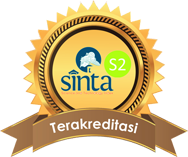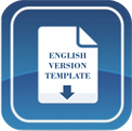Students' Creative Thinking Skills on Reaction Rate Topic through Contextual Teaching and Learning Model
DOI:
https://doi.org/10.15575/jtk.v7i1.18326Keywords:
contextual teaching and learning, creative thinking skill, the reaction rateAbstract
This research aims to analyze the contextual teaching and learning (CTL) model on students' creative thinking skills on the reaction rate topic. This quantitative research used true experimental design of pretest-posttest control. The samples used in this study were from 11th grade at SMA Negeri 1 Pinolosian. The experimental class sample was given treatment of the CTL learning model while the control class used conventional learning, respectively, were 31 and 30 students of 93 populations. Based on a questionnaire, students' creative thinking skills were obtained through observation during the learning process. The data analysis of the test instrument was carried out through a validity test using the product-moment correlation technique (significant level = 0.05), Lilliefors normality test, homogeneity of variance test and ttest. The CTL implementation questionnaire and instrument test data were converted into percentages and categorized. The results showed that the application of the CTL model had a positive effect on students' creative thinking abilities, evidenced by the average score of students in the experimental class before and after treatment increased from 14.55 to 74.84. Otherwise, in the control class, the scores were 30.59 to 33.56. The percentage of students' achievement in creative thinking aspects in the experimental class was good (61%-80%) while the control class was less good (21%-40%). The creative thinking abilities of both classes are very different, which is also reflected in the learning outcomes. The value of tcount (2.240) was greater than ttable (2.042) at the significant level = 0.05, and the hypothesis of H0Â was rejected, or H1Â was accepted. The application of the CTL learning model positively influenced students' creative thinking skills on the reaction rate material. Students' low originality abilities compared to fluency, flexibility, and elaboration abilities were also discussed.
References
Addaini, A., & Alvina, S. (2020). Pengaruh Model Pembelajaran Contextual Teaching Learning (CTL) terhadap Hasil Belajar Siswa pada Materi Suhu dan Kalor. Jurnal Riset Inovasi Pembelajaran Fisika, 2(2), 16–22. https://doi.org/10.29103/relativitas.v3i1.2536
Agustin, Y., Fadiawati, N., & Tania, L. (2016). Peningkatan Keterampilan Berpikir Kritis Siswa pada Materi Laju Reaksi Melalui Pendekatan Saintifik. Jurnal Pendidikan Dan Pembelajaran Kimia, 5(3), 98–112. Retrieved from http://jurnal.fkip.unila.ac.id/index.php/JPK/article/view/12420
Ariesta, N., Ariani, D., Retno, S., & Haryono, H. (2013). Pengaruh Pembelajaran Kimia Dengan Pendekatan CTL (Contextual Teaching and Learning) Melalui Metode Guided Inquiry Dan Proyek Terhadap Prestasi Belajar Ditinjau Dari Kemampuan Matematik Siswa Pada Materi Kelarutan Dan Hasil Kali Kelarutan Kelas XI IPA SMA. Jurnal Pendidikan Kimia Universitas Sebelas Maret, 2(3), 59-67. Retrieved from https://www.neliti.com/id/publications/126088/pengaruh-pembelajaran-kimia-dengan-pendekatan-ctl-contextual-teaching-and-learni
Artini, D., Suardana, N., & Wiratini, M. (2019). Pengaruh Model Pembelajaran Kontekstual pada Pokok Bahasan Hidrokarbon terhadap Hasil Belajar Kimia. Jurnal Pendidikan Kimia Undiksha, 3(1), 20–28. https://doi.org/10.23887/jjpk.v3i1.21156
Coon, D., & Mitterer, J. O. (2014). Psychology: Modules for active learning. Cengage Learning.
Daud, A. M., Omar, J., Turiman, P., & Osman, K. (2012). Creativity in science education. Procedia-Social and Behavioral Sciences, 59, 467-474. https://doi.org/10.1016/j.sbspro.2012.09.302
Febrianti, Y., Djahir, Y., & Fatimah, S. (2016). Analisis Kemampuan Berpikir Kreatif Peserta Didik dengan Memanfaatkan Lingkungan pada Mata Pelajaran Ekonomi di SMA Negeri 6 Palembang. Jurnal Profit, 3(1), 121–127. Retrieved from https://ejournal.unsri.ac.id/index.php/jp/article/view/5561
Haryanti, Y. D., & Saputra, D. S. (2019). Instrumen penilaian berpikir kreatif pada pendidikan abad 21. Jurnal Cakrawala Pendas, 5(2), 58-64. http://dx.doi.org/10.31949/jcp.v5i2.1350
Hasanah, N., Sutarto, S., Nuriman, N., & Budiarso, A. S. (2020). STEM-CP (Science, Technology, Engineering, Mathematics, and Contextual Problem) Based Colloid Textbook to Increase Creative Thinking Skill for Chemistry Learning in Senior High School. Pancaran Pendidikan, 9(1). https://doi.org/10.25037/pancaran.v9i1.274
Ilaah, Y. F. (2015). Critical thinking skill of student SMA Kemala Bhayangkari 1 Surabaya on reaction rates topic by implementation of inquiry learning models. UNESA Journal of Chemical Education, 4(1). Retrieved fro https://ejournal.unesa.ac.id/index.php/journal-of-chemical-education/article/view/10854
Ischak, N. I., Odja, E. A., La Kilo, J., & La Kilo, A. (2020). Pengaruh Keterampilan Proses Sains Melalui Model Inkuiri Terbimbing terhadap Hasil Belajar Siswa pada Materi Larutan Asam Basa. Hydrogen: Jurnal Kependidikan Kimia, 8(2), 58–66. Retrieved from http://e-journal.undikma.ac.id/index.php/hydrogen/article/view/2748-6847-1
Jumi, W., Suleman, N., & Tangio, J. S. (2018). Identifikasi Kemampuan Berpikir Kreatif Siswa Menggunakan Soal Tes Open Ended Problem Pada Materi Elektrokimia di SMA Negeri 1 Telaga. Jambura Journal of Educational Chemistry, 13(1), 35-43. Retrieved from https://www.neliti.com/publications/277442/identifikasi-kemampuan-berpikir-kreatif-siswa-menggunakan-soal-tes-open-ended-pr
Juniwati, J., & Sari, R. P. (2019). Pengaruh Model Contextual Teaching and Learning (CTL) pada Pembelajaran IPA Terhadap Keterampilan Berfikir Kritis Peserta Didik. KATALIS: Jurnal Penelitian Kimia dan Pendidikan Kimia, 2(2), 38-45. Retrieved from https://ejurnalunsam.id/index.php/katalis/article/view/1844
La Kilo, A. (2017). Solusi rumus derajat keasaman reaksi asam basa pada larutan penyangga dengan metode mol awal (rumus akram). PATEN, 8(1065). Retrieved from https://www.academia.edu/download/58857177/Rumus_Akram_dan_hakinya.pdf
Laliyo, L. A. R., Kau, M., La Kilo, J., & La Kilo, A. (2020). Kemampuan siswa memecahkan masalah hukum-hukum dasar kimia melalui pembelajaran inkuiri terbimbing. AR-RAZI Jurnal Ilmiah, 8(1), 1–8. https://doi.org/10.29406/ar-r.v8i1.1875
Mulyono, Y. (2018). Improving creativity of the future physics teachers through general biology learning based on CTL with experimental method. Indonesian Journal of Science and Education, 2(1), 1–7. https://doi.org/ 10.31002/ijose.v2i1.621
Nugraheni, R. A. S. (2015). Pengaruh Contextual Teaching and Learning (CTL) terhadap Sikap peduli Lingkungan Siswa Kelas IV di SD Negeri Selang Kecamatan Wonosari Kabupaten Gunungkidul. Thesis, Lumbung Pustaka Universitas Negeri Yogyakarta. Retrieved from https://eprints.uny.ac.id/23454/1/SKRIPSI.pdf
Osman, S. Z. M., Jamaludin, R., & Iranmanesh, M. (2015). Student Centered Learning at USM: What Lecturer and Students Think of This New Approach?. Journal of Education and Practice, 6(19), 264-277. Retrieved from https://eric.ed.gov/?id=EJ1079536
Pikoli, M., Sukertini, K., & Isa, I. (2022). Analisis Model Mental Siswa dalam Mentransformasikan Konsep Laju Reaksi Melalui Multipel Representasi. Jambura Journal of Educational Chemistry, 4(1), 8–12. https://doi.org/10.34312/jjec.v4i1.13515
Purwaningrum, J. P. (2016). Mengembangkan Kemampuan Berpikir Kreatif Matematis Melalui Discovery Learning Berbasis Scientific Approach. Refleksi Edukatika, 6(2), 145–157. https://doi.org/10.24176/re.v6i2.613
Putra, R. D., Rinanto, Y., Dwiastuti, S., & Irfa, I. (2016). Peningkatan Kemampuan Berpikir Kreatif Siswa melalui Model Pembelajaran Inkuiri Terbimbing pada Siswa Kelas XI MIA 1 SMA Negeri Colomadu Karanganyar Tahun Pelajaran 2015 / 2016 The Increasing of Students Creative Thinking Ability Through of Inquiry Learni. Proceeding Biology Education Conference, 13(1), 330–334. Retrieved from https://jurnal.uns.ac.id/prosbi/article/view/5738
Salleh, S. M., Tasir, Z., & Shukor, N. A. (2012). Web-based simulation learning framework to enhance students’ critical thinking skills. Procedia-Social and Behavioral Sciences, 64, 372–381. https://doi.org/10.1016/j.sbspro.2012.11.044
Samosir, B. S., Lisna, A., & Tua, H. (2019). Pengaruh Model Pembelajaran Kontekstual terhadap Kemampun Berpikir Kreatif dan Hasil Belajar Siswa. Jurnal Karya Pendidikan Matematika, 6(2), 1–7. Retrieved from https://jurnal.unimus.ac.id/index.php/JPMat/article/view/5037
Saputra, H., Kurniati, T., & Fadhilah, R. (2020). Efektivitas Metode Praktikum Indikator asam basa Berbasis Contextual Teaching Learning (CTL) terhadap hasil belajar siswa kelas XI SMA Negeri 7 Pontianak. Ar-Razi Jurnal Ilmiah, 8(1), 44–51. http://dx.doi.org/10.29406/ar-r.v8i1.1824
Setiawati, S. S. (2020). Profil model mental siswa pada submateri hukum laju reaksi dengan menggunakan tes diagnostik model mental pilihan ganda dua tingkat. Doctoral dissertation, Universitas Pendidikan Indonesia. Retrieved from http://repository.upi.edu/id/eprint/54582
Siswanto, J., & Mustofa, A. W. (2012). Pengaruh Penggunaan Model Pembelajaran Kontekstual Dengan Media Audio-Visual Terhadap Kemampuan Berpikir Kritis Dan Kreatif Siswa. Media Penelitian Pendidikan, 6(1), 1-9. Retrieved from http://journal.upgris.ac.id/index.php/mediapenelitianpendidikan/article/view/358
Subawa, K., La Kilo, A., & Laliyo, L. A. R. (2018). Penerapan Model Learning Cycle pada Materi Laju Reaksi untuk Meningkatkan Hasil Belajar. Jambura Journal of Educational Chemistry, 13(1), 51–58. Retrieved from https://media.neliti.com/media/publications/277384-penerapan-model-learning-cycle-pada-mate-9095d31a.pdf
Suryono, S. (2019). Penerapan Pembelajaran Kontekstual (Contextual Teaching And Learning) Dalam Pembelajaran Sistem Periodik Unsur Siswa Kelas X Mipa 3 Sma Negeri 5 Jember. BIO-CONS: Jurnal Biologi dan Konservasi, 1(1), 17-27. Retrieved from http://jurnal.unipar.ac.id/index.php/biocons/article/view/227/233
Syuhada, F. A., Dalimunthe, M., Sari, W. S. N., & Sihombing, J. L. (2020). Penerapan Model Pembelajaran Contextual Teaching and Learning dengan Media LKS untuk Meningkatkan Kerjasama dan hasil Belajar Kimia Siswa. JS (Jurnal Sekolah), 4(2), 150-157. Retrieved from file:///C:/Users/asus/Downloads/17971-40147-1-SM.pdf
Taofek, I., & Agustini, R. (2020). Pengembangan Lembar Kerja Siswa berbasis Contextual Teaching and Learning untuk Meningkatkan Keterampilan Berpikir Kritis Siswa pada Materi Laju Reaksi Kimia Kelas XI SMA. UNESA Journal of Chemical Education, 9(1), 121-126. Retrieved from https://ejournal.unesa.ac.id/index.php/journal-of-chemical-education/article/view/32066
Winarti, W. (2016). Contextual teaching and learning (CTL) untuk meningkatkan kemampuan berpikir kreatif siswa. Jurnal Pendidikan Fisika Dan Keilmuan (JPFK), 1(1), 1-8. http://doi.org/10.25273/jpfk.v1i1.4
Yamin, M. (2013). Strategi dan metode dalam model pembelajaran. Jakarta: GP Press Group.
Zhafirah, T., & Utami, L. (2019). Pengaruh Penerapan Model Pembelajaran CTL Dengan Media Lingkungan Terhadap Motivasi Belajar Siswa Pada Materi Koloid. JEDCHEM (JOURNAL EDUCATION AND CHEMISTRY), 1(2), 64-71. Retrieved from http://ejournal.uniks.ac.id/index.php/JEDCHEM/article/view/137/133
Downloads
Published
How to Cite
Issue
Section
Citation Check
License
Authors who publish with this journal agree to the following terms:
- Authors retain copyright and grant the journal right of first publication with the work simultaneously licensed under a Creative Commons Attribution-ShareAlike that allows others to share the work with an acknowledgement of the work's authorship and initial publication in this journal.
- Authors are able to enter into separate, additional contractual arrangements for the non-exclusive distribution of the journal's published version of the work (e.g., post it to an institutional repository or publish it in a book), with an acknowledgement of its initial publication in this journal.
- Authors are permitted and encouraged to post their work online (e.g., in institutional repositories or on their website) prior to and during the submission process, as it can lead to productive exchanges, as well as earlier and greater citation of published work (See The Effect of Open Access).








